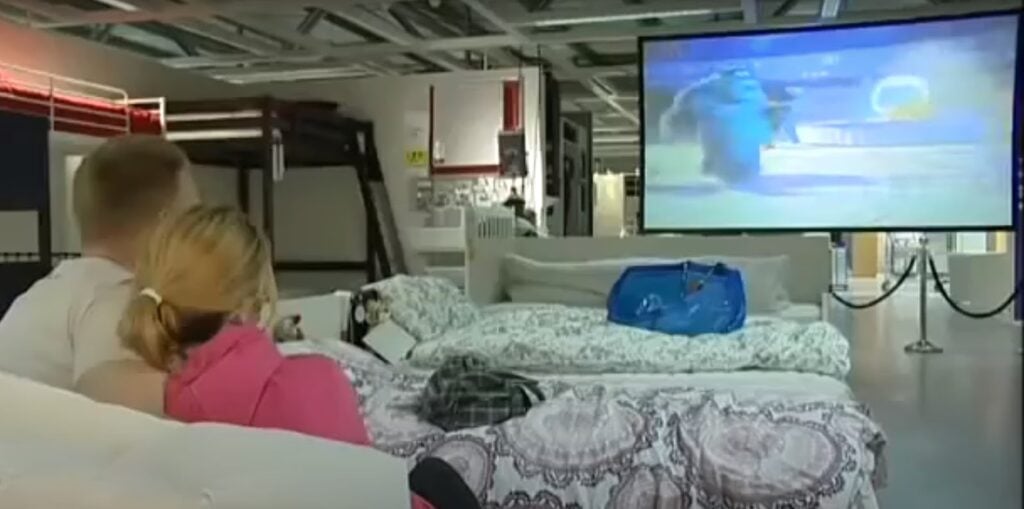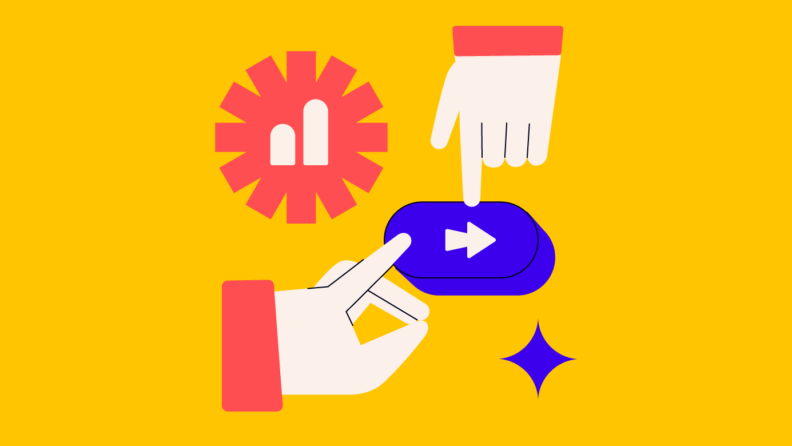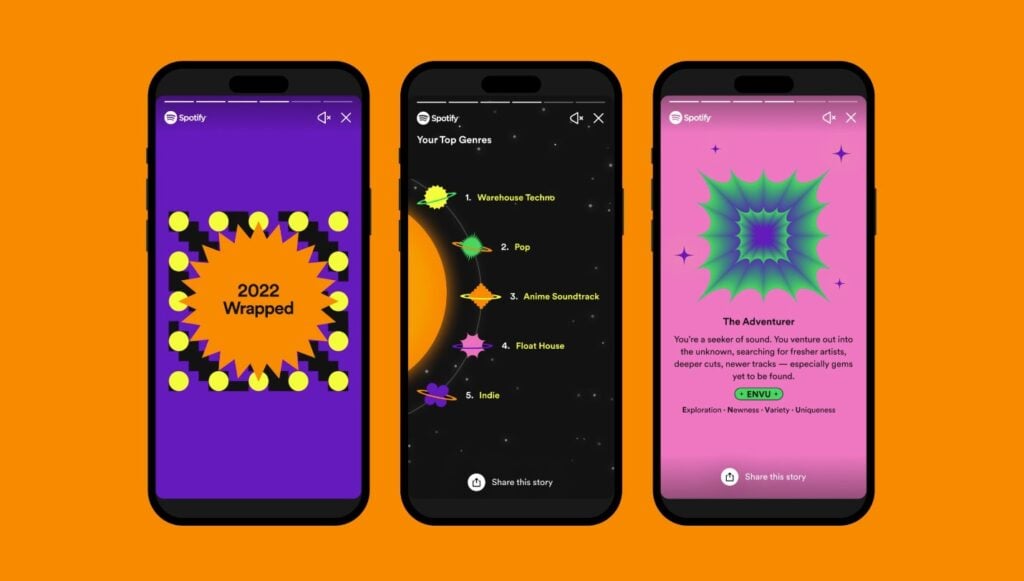In 2020, Adobe challenged filmmakers worldwide: create a short film using only Adobe’s stock video footage. The result? The Adobe Stock Film Festival, which had over 1.5 million viewers and resulted in a 50% bump in brand awareness for Adobe—and 3,000 new Adobe Creative Cloud subscriptions.
Adobe’s film festival is an example of what’s known as a ‘brand activation’: an event that gets people talking about your brand and influences customers to purchase. It's brand marketing on steroids.
Read on if you’re wondering what brand activation might mean for your SaaS company. In this article, I'll break down the most popular types of brand activations, outline how to run a successful brand activation campaign and give examples of viral brand activations to inspire your next campaign.
Defining Brand Activation
Les Binet—a renowned marketing researcher known for co-authoring The Long and Short of It, a book on marketing effectiveness—defines brand activation as a “marketing activity that evokes an immediate response.” This is in contrast to long-term brand building, which focuses more on influencing the perception of potential customers over the course of years.
As Binet explains, both activities are critical:
“Really smart marketers build the brand long-term and activate it efficiently. Building the brand long-term builds up preference for the brand, and then activation converts that preference efficiently into cash.”
What does this mean in practice?
A brand activation might mean participating in a trade show; it can be a unique, hands-on activity that gets customers involved with your brand in a positive way; or it can even be a publicity stunt or a guerilla marketing event.
With the rise of performance marketing—where every dollar of marketing spend can be tracked, and tied to the purchase it influenced—the impact of brand activations can seem murky by comparison. But the evidence says it works.
For example, 98% of consumers create social media content when they’re at brand events and experiences; the content they create then amplifies the brand’s message, leading people in their social network to buy more from the brand too. 72% of consumers say friends’ posts about branded experiences make them more likely to purchase a brand.
Why Invest in Brand Activations?
Why are brand activations a key part of brand management strategy today?
Short-term sales benefits are a key driver: 85% of consumers attending a branded marketing experience are more likely to buy the products being promoted.
But brand activations don’t just influence immediate sales—they also impact long-term brand perceptions. 91% of consumers develop more positive brand associations toward the companies involved. Brand activations can also be more impactful than other forms of marketing. Consumers say that events and experiences are a better way to understand product benefits than physical stores, online ads, or social media.
Another key benefit is harder to quantify: brand activations help humanize brands by connecting with consumers on an emotional level. For example, Golden Circle, an Australian beverage brand, launched a pop-up vending machine that allows consumers to “pay for their drink with a smile,” which reinforces the brand’s image. Andrea Payne, the head of marketing for Kraft Heinz A/NZ (which owns the Golden Circle brand), said:
“As a brand, we see ourselves bringing that flash of sunshine and special, simple moments. Being relevant in culture and finding moments where our brand can have meaning and deliver on our purpose of delivering that splash of sunshine is key.”
The impact of this sort of brand activation is often amplified—the more emotional connection consumers feel, the more likely they are to share user-generated content with their networks.
Most Popular Types of Brand Activation
The majority of brand activations fall into one of the following categories:
Free Samples and Product Trials
There’s a reason companies insist on free samples, giveaways, and trials: they really work. Sampling campaigns and trials lower the barrier to entry so customers can try your product without committing.
Once customers have sampled, 35% will buy your product. (In many cases, this happens even though they originally intended to purchase from another brand). Even more impressive, 58% of those buyers will stick with your brand in the future.
Experiential Activations
Ads are great, but nothing beats an immersive brand experience. 93% of consumers say that live events influence them more than television ads.
Experiential activations are a marketer’s playground: the more imaginative, memorable, and shareable an experience is, the better. Pop-up stores, brand museums, brand collaborations, and Instagram playgrounds are all examples of ways brands use experiential marketing to drive impressions and positive brand associations.
Trade Show Booths
There are few older marketing mediums than the trade show booth—and it shows no signs of going away. 70% of companies generated leads from trade shows in 2022. Meanwhile, 92% of trade show attendees report that they go to trade shows mainly to check out the new brands and products being featured.
That means an eye-catching trade show booth and interactive, memorable experiences are as powerful as ever. (Just remember to put all those leads into your brand management software for follow-up).
In-Store and Online Promotions
Looking for a guaranteed way to catch your customers’ attention? In-store and online promotions give your audience a reason to pay attention. Whether you’re running a flash sale, a BOGO (buy one, get one free) promotion, or a free shipping discount, promotions can drive valuable impressions and sales.
Whatever promotion methods you opt for, make sure to time your promotions to align with moments of high buying intent along the customer journey.
Guerrilla Activations
A guerrilla marketing activation takes customers by surprise in a bid for media attention, and typically occupies unconventional, unexpected channels like street marketing, flash mobs, pop-up events, and public space takeovers.
McDonald’s, for example, has a habit of painting over crosswalks around the world in the red-and-yellow hues of its signature fries, often using the street art to point pedestrians toward the nearest McDonald’s location.
Guerrilla marketing has its risks, though: Snapple attempted to set a world record for the world’s largest popsicle in New York, but the 25-foot-tall frozen Snapple-flavored popsicle melted faster than expected, filling the streets with sticky kiwi-strawberry flavored fluid and generating a slew of embarrassing headlines.
Running a Successful Brand Activation Campaign
To execute an impactful brand activation campaign, you need strategic planning, flawless execution—and the right people steering the ship. Here are some key points to keep in mind.
Understand Your Target Audience
If you don’t resonate with your audience, your activation is doomed from the start. Do your best to understand your target audience prior to designing your brand activation. Focus on pain points, values, and preferences. Solicit customer input through roundtables, and pay close attention to your customers’ reactions to other brand activations. You can also track what your audience is interested in on social media using social listening software.
Once your brand activation is complete, survey customers for their input and listen closely to social chatter to see what your audience really thought about your activation.
Pro tip: Keep generational gaps in mind. Messaging that intrigues Gen Z may alienate Baby Boomers. Customize your campaigns for geographical, generational, demographic, and cultural variables.
Rethink Your Marketing Budget
There’s a shift in the marketing world, with brands moving away from a purely performance marketing-based approach and towards ambitious brand management programs.
As Les Binet notes:
“Companies like Google and Amazon have spent 20 years building up long runs of performance data, and they’re the ones who are now piling back into traditional ad media like TV and outdoor. The rest of the marketing community should take note.”
While the exact number will vary based on your marketing strategy, consider allocating a substantial portion of your total marketing budget towards activation campaigns—especially if you currently rely heavily on performance-based marketing.
Set Campaign Goals and Purpose
Begin by defining the specific purpose of your campaign:
Do you want to boost brand awareness? Acquire leads? Announce a product launch? Establish baseline metrics like market share and conversion rates to quantify campaign impact.
Use marketing measurement tools to set and track metrics and monitor real-time analytics. Continually measure brand awareness and use the insights gleaned from the data to optimize underperforming aspects of the campaign and double down on what works.
Beyond metrics, though, you’ll also want to think about the deeper mission behind what you’re doing. What’s the “why” at the heart of your brand activation? How does it connect with your brand values and brand identity, and how will it inspire customer loyalty?
Understand Latest Trends
Coachella, the music festival, is becoming an increasingly important place for trendy brands to be seen. Many brands see a significant benefit from associating themselves with a trending cultural moment (especially one as full of influencers as Coachella).
Sheena Parks, Creative Director for Matisse footwear, organizes brand activations at Coachella and said:
“It doesn’t necessarily bring in new customers. It’s the chatter — it looks cool from a brand standpoint. You’re involved; you’re in the soup — you’re in it. It’s such an affordable way to market.”
Whether it’s TikTok or Coachella, or—for SaaS brands—something entirely different, make sure to understand the trends that are relevant to your audience, and be a part of them.
Assemble an Activation Task Force
Brand activations can be complicated affairs; some ambitious public relations stunts can take years to come to fruition. To make them happen, you’ll need a talented group of people.
Here are some must-have roles:
- Creative Lead: Spearheads concept ideation, campaign design, and asset production.
- Marketing Lead: Develops promotional plans, lead nurturing funnels, and partnerships.
- Public Relations Lead: Engages press and secures earned media coverage.
- Technology Lead: Executes website updates, custom development, and analytics tracking.
- Project Manager: Owns timelines, budgets, and cross-functional collaboration.
- Customer Service: Equipped to handle customer inquiries prompted by activation.
- Sales: Understands offering and campaign purpose to convert leads.
The final shape of your activation task force will be heavily influenced by the size of your company, your budget, and your team’s bandwidth. Small, scrappy brands often rely on their marketing director or creative director to run a brand activation with a few in-house team members—though each person ends up wearing many hats.
Big brands can afford to pull together a larger cross-functional team, or even hire a dedicated brand activation manager. Outsourcing a brand activation to an agency can be the right choice when your team doesn’t have the experience (or bandwidth) for a particular activation.
With the right people in place to coordinate it all, you’ll be well-placed to pull off a memorable brand activation.
5 Viral Brand Activation Campaign Examples
The most notable brand activations hugely impact sales, customer interest, and brand recognition. Use the following viral brand activation examples to get inspiration for your next campaign:
1. Red Bull's Stratos Space Jump
Red Bull spent seven years planning this ambitious leap from 128,000 feet (24.2 miles) above Earth, setting a world record in the process—and going faster than the speed of a bullet. Felix Baumgartner, an Austrian skydiver, worked with Red Bull’s R&D department on this activation, which cost $50 million.
The stunt paid off: eight million people watched the live stream of the event, and in the six months after the activation Red Bull’s sales increased by 7%, or $1.6 billion.
2. Spotify's Annual "Wrapped" Campaign
Spotify Wrapped—a marketing campaign that provides users with a highly personalized breakdown of their listening habits each year—got a promising response when it launched in 2016.
Alex Bodman, vice president and global executive creative director at Spotify, says:
“Suddenly we started to realize that this was an incredible way to get our passionate users to shout from the rooftops around the brand.”
Since then, it’s become an annual staple in the music industry, as well as a cultural phenomenon among consumers. In 2020, the Spotify Wrapped campaign increased app downloads by 20%; in 2022, the campaign was shared a staggering 100 million times on social media.
3. Wistia’s “One, Ten, One Hundred”
B2B SaaS platforms face a trickier set of brand activation circumstances than physical products or consumer-facing brands. Sure, there’s always trade shows; but what can SaaS brands do to create a wider cultural impact?
Wistia, a video hosting platform primarily for B2B customers, gives one answer to that question. The company hired a video production company to create three different marketing videos for them at three different budget levels: $1,000, $10,000, and $100,000. Then, they had a documentary crew film the process, helping Wistia become a part of a cultural conversation around the relationship between money and creativity.
The documentary ended up winning a Webby Award, streaming on Amazon Prime, and generating significant brand awareness for Wistia.
4. Coca-Cola's "Share a Coke"

You might remember seeing this experiential marketing campaign by Coca-Cola in the early 2010s, which generated significant media coverage and word of mouth by personalizing Coke products with common names. This seemingly simple idea caused sales to spike as people bought Cokes featuring their family and friends’ names, and shared on social media.
The campaign, which first launched in Australia, helped Coke sell more than 250 million Coca-Colas in one summer in a country of just 23 million people—nearly 11 Cokes per person.
5. IKEA's Sleepover Event

Executives at IKEA noticed a Facebook group with 100,000 members titled ‘I wanna have a sleepover in IKEA.’ They obliged, randomly selected 100 people from the group and inviting them to spend the night in an IKEA store.
This unique store brand activation was intended to help position IKEA as an authority in mattresses and bedding products, but its power came from the fact that it originated with a customer-led idea. After the success of the original brand activation event, similar events were run by IKEAs around the world.
Light Up Your Brand’s Potential with Activations
Gone are the days where “marketing” just meant Google, Facebook, and Instagram ads. While effective, ads can struggle to break through the noise and won’t do much to redefine your brand image among your audience. Plus, customers get tired of being bombarded with the same messages through the same channels.
Brand activations are a powerful solution: they keep your company top-of-mind with customers, humanize your brand, and—if they’re memorable enough—they have the potential to go viral. Activations are a chance to be imaginative and ambitious while redefining your brand in the eyes of customers, creating a meaningful, long-term brand impact.
And to keep the marketing insights coming your way, don’t forget to sign up for our newsletter tailored for marketing leaders.






